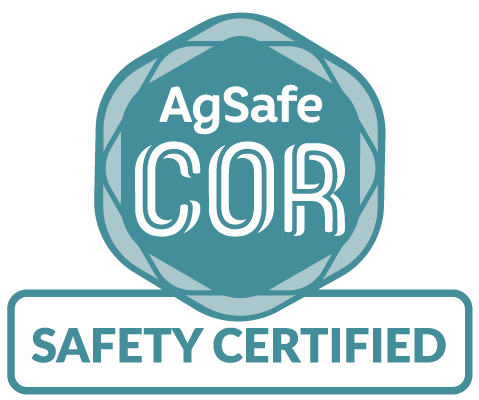Frequently Asked Questions (FAQs) for the Certificate of Recognition Program

Certificate of Recognition (COR) Program
What is a Certificate of Recognition?
The Certificate of Recognition (COR) is awarded to employers who implement and maintain an agricultural occupational health and safety program that exceeds regulatory requirements. COR recognition is earned by employers who successfully meet and pass a set of audit standards.
For more information on Certificate of Recognition (COR), please click here.
Policy Reference - Per WorkSafeBC
"The Assessment Manual sets out the framework and describes the guiding principles for the COR program. Employers should review policy AP5-247-4 to learn more about how decisions relating to the COR program are made, as well as for details about the requirements of an occupational health and safety management system."
How much does it cost to participate?
Certifying Partnership
What is a Certifying Partner?
How do we verify who our company’s COR Certifying Partner is?
What is the Partners Program?
Benefits of Becoming COR Safety Certified
What are the benefits of participating in the program?
The reward for this new, higher level of accountability is first and foremost a safer, healthier workforce but there are important financial benefits, as well. WorkSafeBC provides incentive payments to COR companies in good standing.
Over time, with reduced injuries and shorter claims duration, the primary agricultural employer’s experience rated WorkSafeBC premium will reflect additional savings.
How is the incentive payment calculated?
The incentive payment is calculated using the following calculation:
company’s reported assessable payroll x CU base rate / $100 x 10%
LARGE EMPLOYER EXAMPLE: If your reported payroll was $2 million and your CU base rate was $2.00, your incentive payment would be $4,000: ($2,000,000 X $2.00)/$100 x 10% = $4,000
SMALL EMPLOYER: There is a minimum annual COR payment (currently the lesser of $1000, or 75% of what the employer has paid in premiums for the incentive year being calculated) to ensure a financial incentive is possible for even the smallest employers.
*Employers must implement an agricultural health and safety program then successfully pass the audit prior to applying for an incentive payment.
COR with AgSafe BC
What are the Classification Units automatically eligible to participate in AgSafe’s COR program?
Eligibility:
Companies in the Agricultural sector, as well as Naturally Aligned CU’s are automatically eligible to participate in AgSafe’s COR program. Companies outside of the Agricultural industry that are interested in pursuing a AgSafe COR may submit a COR application for review. Participation will be subject to approval by WorkSafeBC on a case by case basis.
How do employers register for the program?
Primary agricultural employers wishing to register for the program should fill out the online registration form, or contact their Regional Safety Consultant, Advisor or the AgSafe office at 1-877-533-1789.
How long is a COR certificate valid?
COR certifications are valid for three years.
Annually, every employer must conduct a maintenance audit to keep their certificate of recognition valid to be considered for an incentive payment.
What is an agricultural health and safety program?
An active agricultural health and safety program helps to ensure workers and agricultural workplaces are safe and secure from injury, illness and disease. This is accomplished through identifying, assessing, and controlling risks to workers.
COR Audits
What is an audit?
An agricultural audit is a comprehensive review which must be carried out by a qualified auditor, using an agricultural audit provided by AgSafe. The audit covers the basic elements required for a health and safety program and includes interview, documentation review, and first-hand observation.
